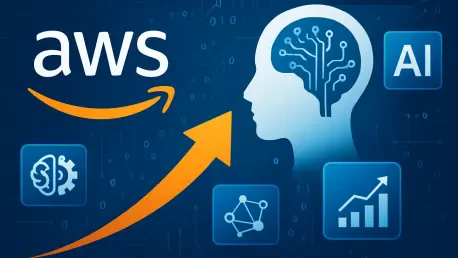The workforce dynamic within Amazon’s AWS division has recently come under intense scrutiny as the company embarks on a series of layoffs. This move is emblematic of a broader trend within the tech industry, where automation and artificial intelligence are becoming pivotal. As AWS navigates its strategic realignment, these layoffs reflect significant recalibrations in Amazon’s workforce strategy, shaped by the increasing integration of AI technologies. This scenario not only highlights potential uncertainties in job security for tech professionals but also marks a shift in how companies view the future of human resources. By delving into the layers of Amazon’s workforce adjustments, this article sheds light on the multifaceted impact of technological advances on traditional job roles.
Amazon’s Strategic Workforce Realignment
Impact of AI on Workforce Configuration
As Amazon accelerates its shift toward AI and automation, the impact on its workforce configuration becomes increasingly pronounced. Within AWS, the introduction of more AI-driven processes is reshaping the roles traditionally performed by employees. This transition does not solely involve job eliminations; rather, it indicates a broader shift in skill requirements. Amazon is emphasizing more technically nuanced positions that require expertise beyond conventional skill sets. This has sparked discussions about the broader implications of AI, not just at Amazon, but across the tech world. As automation continues to mature, the demand for specific expertise grows, influencing how organizations manage and deploy their human capital. The balance between reducing workforce redundancy and meeting new business challenges reflects Amazon’s strategic intent to align its team with advancing technological landscapes.
Reskilling and Redeployment Strategies
Amazon’s approach to navigating workforce changes in AWS encompasses not just layoffs but also reskilling and redeployment initiatives. As the company invests in AI capabilities, opportunities arise for displaced employees to transition into roles aligned with emerging tech. This not only mitigates job loss anxiety but fosters an environment where continuous learning and adaptation are valued. The ongoing training programs signify Amazon’s commitment to workforce evolution amidst technological disruption. These efforts are crucial, considering that roles in operations and client collaborations are increasingly dependent on advanced digital proficiency. Moving forward, Amazon’s workforce strategy reflects a dual focus: embracing technology’s operational efficiencies while nurturing employee skills to thrive in a rapidly changing industry environment.
Wider Implications for the Tech Industry
Industry Trends and Workforce Evolution
The adjustments at Amazon’s AWS serve as a microcosm of larger trends in the technology sector, where AI and automation are becoming increasingly embedded in operational models. Tech companies globally are reevaluating how to blend human and machine capabilities effectively. This trend suggests a shift toward jobs that are augmented rather than replaced by technology. In this context, traditional job functions are evolving, necessitating a rethinking of recruitment and training approaches. Ensuring workforce readiness in the face of such rapid change is a challenge that companies like Amazon are tackling by aligning organizational goals with the evolving tech landscape. These industry shifts are emblematic of a redefined future, where human resources must coexist harmoniously with accelerating technological advancements, ensuring sustainable growth and innovation in the sector.
Repercussions on Employment Stability
The workforce changes initiated by AWS highlight concerns about employment stability, both within Amazon and the wider tech industry. As companies intensify AI-driven transformations, questions about job security and the adaptability of existing roles become pressing. This reflects broader economic and social considerations, as the transition impacts not only those displaced but also those adapting to new roles. As organizations grapple with these realities, the importance of developing robust transition planning and support systems gains traction. Industries are beginning to realize that maintaining competitive advantage requires more than technological innovation; it demands a workforce that can seamlessly integrate new tools and processes. This understanding drives ongoing discourse about the human implications of tech transitions, encouraging proactive measures to manage workforce volatility in an AI-enhanced landscape.
Navigating the Future of Work
Guided Employee Transition Programs
Amazon is pioneering comprehensive transition programs to support employees affected by AWS layoffs, demonstrating a commitment to responsible workforce management amid technological upheaval. These programs encompass severance packages, healthcare benefits, and career transition resources, such as retraining and redeployment assistance. By facilitating smooth transitions, Amazon aims to soften the immediate impact on affected individuals, helping them navigate new career paths or find suitable roles within the organization. This approach illustrates a model for other tech companies facing similar challenges, emphasizing the importance of compassion and innovation in workforce strategies. Such efforts underscore the need for companies to play an active role in equipping their employees to thrive in an AI-powered job market, balancing business needs with a commitment to employee welfare.
Prospects of the Tech Labor Landscape
Amazon’s AWS division is currently facing significant scrutiny as it undergoes a series of layoffs, mirroring a larger trend within the tech sector where automation and artificial intelligence are becoming integral. This strategic shift in AWS’s operations indicates a major overhaul in Amazon’s approach to its workforce, driven by the greater incorporation of AI technologies. These layoffs not only spotlight the potential for job insecurity among tech professionals but also signify a transformation in corporate perceptions of the future of human resources. The situation at Amazon serves as an example of how companies are reassessing traditional job roles in light of rapid technological advancements. By examining Amazon’s strategic adjustments to its workforce, one can better understand the multi-layered effects of tech innovation on established employment practices. This shift suggests how businesses might continue to evolve their HR strategies, emphasizing the growing importance of technology over traditional roles in the coming years.









